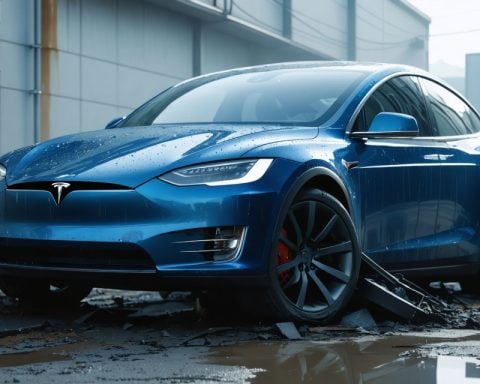- Urban landscapes are being reshaped through the use of big data, driven by technology and innovation.
- Sensors, cameras, and GPS devices continuously collect real-time data, aiding city planners in creating more livable cities.
- Cloud-based platforms are essential for managing the vast amounts of data, overcoming limitations of on-premises systems.
- Robust data security, with layered encryptions, protects sensitive information, enabling confident utilization of data insights.
- High-Performance Computing (HPC) rapidly processes data, facilitating better urban planning and smarter city designs.
- The Internet of Things (IoT) enhances city intelligence, with real-time analytics enabling swift problem-solving and opportunity-seizing.
- Effective IT strategies are crucial for successfully integrating data and technology in urban development.
The urban skyline is blurting into the future with technology as its heartbeat. Cities, throbbing with life and the hum of human endeavor, are turning into vibrant laboratories of data-driven innovation. Amidst bustling streets and towering skyscrapers, an inconspicuous revolution is unfolding — the silent orchestration of big data in reshaping urban landscapes.
Imagine a city where sensors, cameras, and GPS devices tirelessly gather an unending stream of information. This colossal wave of data, known as big data, is more than a torrent of numbers. It spins the story of urban life in real-time, offering clues to architects and planners striving to design cities that are not just livable but flourishing.
The sheer volume and speed of this data necessitate sophisticated IT infrastructures. Cloud-based data management platforms emerge as champions, bridging silos and facilitating seamless data flow across departments and even cities. With data soaring to unprecedented heights, on-premises systems buckle under their weight, pushing IT professionals to harness the limitless skies of cloud technology.
Security, too, is bolstered by formidable digital fortresses. Layered encryptions stand guard, deterring unseen threats and safeguarding sensitive information. This ensures that architects wield data insights with confidence, shaping the fabric of tomorrow’s cities.
High-Performance Computing (HPC), the engine room of modern urban design, processes this vast data with breathtaking speed. From simulating traffic flows to envisaging new cityscapes, HPC powers decision-making, paving the way for smarter, safer urban environments.
As Internet of Things (IoT) technology gains momentum, cities pulse with intelligence. Real-time analytics translate into swift actions, fostering communities equipped to navigate challenges and seize opportunities.
The message is clear: in the age of big data, robust IT strategies aren’t just beneficial; they are essential. As urban design ventures into uncharted territories, the symbiosis between data and technology emerges as the magic key to sustainable and thriving urban futures.
Unlocking the Future: How Big Data is Transforming Urban Planning
How-To Steps & Life Hacks
To effectively harness big data in urban planning, city officials and planners can follow these steps:
1. Install Smart Infrastructure: Deploy IoT sensors and cameras in public spaces to collect data on traffic, environmental conditions, and pedestrian movement.
2. Leverage Cloud Platforms: Use cloud-based solutions for data storage and processing to overcome the limitations of on-premises systems.
3. Utilize High-Performance Computing (HPC): Implement HPC systems for running complex simulations and models rapidly.
4. Integrate Data Sources: Consolidate data from different city departments for comprehensive analysis.
5. Engage in Predictive Analytics: Use algorithms to predict trends, such as transport loads or energy consumption, for proactive urban management.
6. Ensure Robust Security: Implement multi-layer encryption to protect sensitive data from breaches.
Real-World Use Cases
Cities worldwide are already benefiting from big data:
– Singapore: Utilizes a smart traffic management system to reduce congestion and improve public transit efficiency.
– Barcelona: Implements IoT technology to monitor air quality and optimize lighting in public spaces.
– New York City: Analyzes city-wide data to enhance emergency response times and resource allocation.
Market Forecasts & Industry Trends
The global smart city market size is expected to grow from USD 410.8 billion in 2020 to USD 820.7 billion by 2025, at a CAGR of 14.8%. The integration of IoT and big data analytics stands out as a primary driver of this growth.
Controversies & Limitations
While big data offers substantial benefits, challenges remain:
– Data Privacy Concerns: Increased monitoring can lead to privacy infringements if not managed with strict regulations.
– Technology Gap: Smaller cities may lack the financial resources and expertise to implement cutting-edge solutions.
Features, Specs & Pricing
Implementing a city-wide big data strategy may involve:
– IoT Sensors: Varied pricing from $50 to thousands of dollars, depending on capability and durability.
– Cloud Services: Monthly subscriptions, often starting at $100, depending on data volume and processing needs.
– HPC Systems: Require significant investment, ranging from $50,000 to several million USD for top-level capabilities.
Security & Sustainability
Modern urban data systems necessitate resilient security measures:
– Encryption Technologies: Use AES-256 encryption to secure data in transit and at rest.
– Sustainability: Employ energy-efficient data centers to minimize environmental impact.
Insights & Predictions
Experts predict that by 2030, cities that fail to adopt big data analytics will fall behind in sustainability and livability rankings, impacting economic growth and quality of life.
Pros & Cons Overview
Pros:
– Improved urban services and infrastructural efficiencies.
– Enhanced decision-making capabilities.
– Greater adaptability to changing urban dynamics.
Cons:
– Privacy risks if data is improperly managed.
– High initial implementation costs.
– Dependency on continuous technological upgrades.
Actionable Recommendations
– Audit Current Infrastructure: Identify areas for integration of IoT and big data technologies.
– Partner with Tech Firms: Collaborate with companies specializing in smart city solutions for tailored assistance.
– Conduct Public Workshops: Educate citizens about the benefits and safeguards associated with smart city initiatives to gather support.
For more information on how technology is transforming urban life, visit IBM or Cisco.












